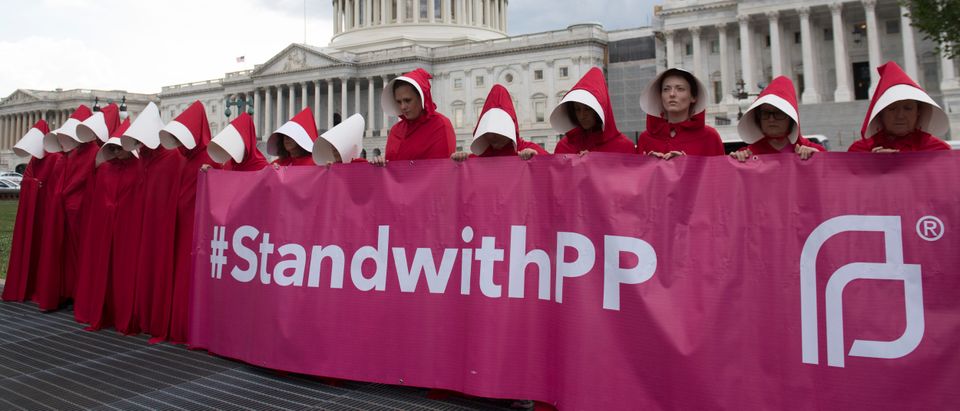Citing Texas as their test case, abortion advocates have long argued that stripping funding from clinics like Planned Parenthood results in a higher maternal mortality rate. But a closer examination of the data revealed that didn’t actually happen.
Between 2011 and 2015, Texas laws changed and a number of abortion clinics closed. Reports at the time indicated a dramatic increase in maternal deaths, which many assumed were a result of abortion services being less accessible. (RELATED: Some Republicans Think The Alabama Abortion Law Goes Too Far)
When ideologues at #txlege decimated the portion of our state budget that covered women’s health services and defunded Planned Parenthood the maternal mortality rate in Texas DOUBLED. https://t.co/DZXqptGiCd 4/
— Julie Oliver (@JulieOliverTX) December 18, 2017
#Texas has the highest maternal mortality rate in the US, with women of color disproportionately affected.
Thanks @BetoORourke for supporting family planning & Planned Parenthood. #Women across the country deserve access to quality health care. https://t.co/OhzM0YMJ2m pic.twitter.com/fRZHmCwEgP
— Planned Parenthood Action (@PPact) February 13, 2018
“Researchers were stunned by Texas, where the maternal mortality rate doubled between 2010 and 2012…
“The increase was difficult to explain ‘in the absence of war, natural disaster, or severe economic upheaval’.”https://t.co/91S0XhGClQ
— Rachel Maddow MSNBC (@maddow) January 16, 2018
Democratic Virginia Rep. Dan Beyer repeated the same narrative during a House Ways and Means Committee hearing on May 16, saying, “Anti-abortion bills increase maternal mortality and infant mortality. Texas is the best case. The reported rate of maternal deaths in Texas doubled when the state closed their abortion clinics and cut funding for Planned Parenthood. The fact is that if Texas was a country it would have the highest maternal mortality rate of any developed country in the world.”
Lisa Hollier, former president and interim chief executive of the American College of Obstetricians and Gynecologists, was also in that hearing as a witness — and she told Beyer that his statement was not accurate.
Hollier informed Beyer then that some of the data had been misreported, resulting in the confusion. “When we analyzed the data, we identified there was significant over-reporting of deaths based on the death certificate data,” she said, adding that based on newer findings, the maternal mortality rate was “not as high as previously reported.”
The original study, published in 2016 in Obstetrics and Gynecology, indicated that the maternal mortality rate had doubled between 2010 and 2012, jumping from 72 cases to 148.
The report noted that “in the absence of war, natural disaster, or severe economic upheaval, the doubling of a mortality rate within a 2-year period in a state with almost 400,000 annual births seems unlikely,” but drew no causal relationship between the rate spike and clinic closings.
Hollier’s team examined 147 of the 148 cases reported in the initial study, however, and determined that only 56 of them actually met the criteria to be considered a maternal death: “Any pregnancy-related death while a woman is pregnant or within 42 days of giving birth, excluding accidental or incidental causes such as car crashes or homicides.”
The newer study also determined that the maternal mortality rate in Texas declined from 2012 to 2015. The revised study was published by Obstetrics and Gynecology in May of 2018.
It should also be noted that, because changes in the way the information is reported, the United States has not had an official maternal mortality rate since 2007.
In spite of a lack of accurate data and the revised report correcting the initial Texas findings, Democratic California Sen. Kamala Harris has introduced legislation designed to fight what she says is a “maternal mortality crisis.”
Black women are facing a maternal mortality crisis in part because of racial bias in our nation’s health care delivery system, and it’s time to change that.
Today, I’m reintroducing the Maternal CARE Act, my bill to fund implicit bias training for health care providers.
— Kamala Harris (@SenKamalaHarris) May 22, 2019
The Washington Post fact-checked Beyer’s statement from last week’s hearing and noted that he would have received “four pinocchios” but for the fact that when he was presented with evidence that his statement had been debunked, he immediately admitted his error.


